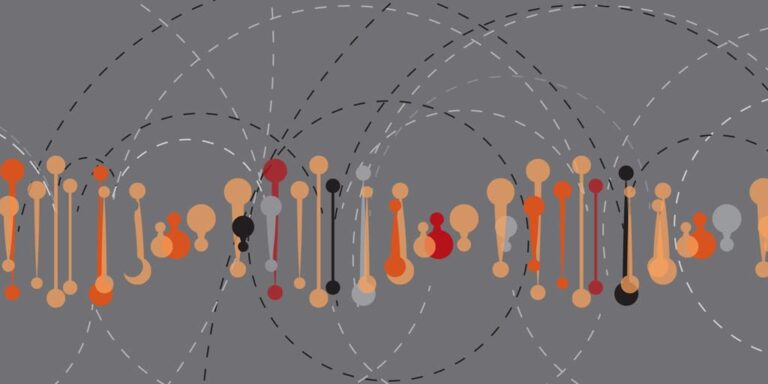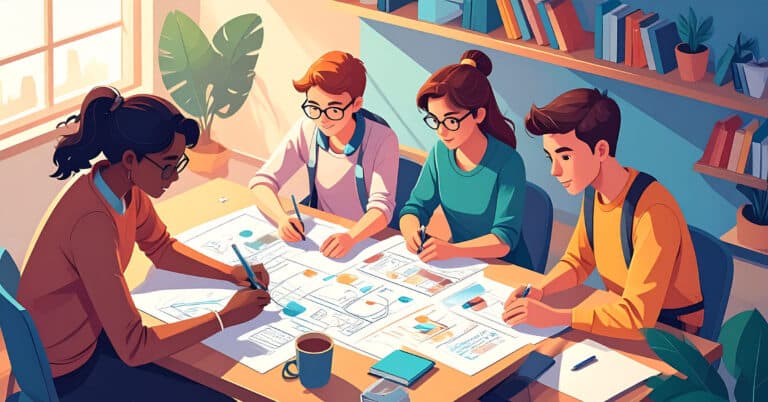When Meredith Burnett wanted to start offering her students more choices in how they learn and how they demonstrate what they’ve learned, she realized she didn’t have to start from scratch: she had everything she needed already.
“I had all of the tools, the worksheets and activities, assignments on Khan Academy, ideas for performance tasks,” Burnett, a seventh-grader math teacher at Johnston-Edgefield-Trenton Middle School in Johnston, South Carolina, explained. “When a teacher from the high school shared her learning menu with me, I thought this could be a way to implement personalized learning. The learning menu could use those tools but give students the opportunity to choose how they want to learn something.”
For Burnett’s principal Debbie Courtney, learning menus are just one of the many ways that educators in her school can provide opportunities for students to be agents of their own learning.
“You can use technology, learning menus, peer tutoring, there’s so many different avenues of personalized learning,” said Courtney. “A lot of people see personalized learning as, ‘I have to teach 30 different lessons in a day.’ That’s not what it’s about. It’s about letting your groups of kids take the content you want them to learn and learn it in their own way.”

Burnett’s learning menus are literally menus. Students choose from appetizers – providing the foundational math vocabulary for the unit they’re working on – before selecting a soup or a salad, the little skills that will support them in their entrée: creating an equation or inequality. Their side dishes offer additional opportunities to practice, and students are required to choose a number activities from each category. Activities may involve designing a poster, defining key terms or concepts in their own wods, completing an assignment on Kahn Academy or others.
“I offered a variety of activities, and I knew there were certain skills my students struggled with – adding and subtracting fractions with a negative, for example,” said Burnett, who could build that extra work into the menu choices available to her students. “I felt like if I gave them the opportunity to write about it, it would enhance and solidify their knowledge.”
Burnett also took what she knew about her students into account when designing the kinds of activities they could choose from.
“I try to think about what things they’re going to like and get excited about doing the assignment,” Burnett said, highlighting her students’ interest in HGTV’s The Property Brothers and fantasy football as potential scenarios for their entrée choice. While some students may be working independently or with peers on different learning menu activities, Burnett can pull small groups to go over concepts they may need extra help with. And those students who are ready for a challenge? They can have dessert.
“The desserts provide some enrichment for those students who feel like they’ve already mastered the skill and want to create their own problems,” said Burnett. “I embedded some standards in those that we wouldn’t have gotten to, gave them a choice to start stepping into some Algebra skills.”
Katlyn Chinn, a seventh grader in Burnett’s class, chooses dessert a lot.
“I like learning about new things. [With dessert], you can give your idea of what you think that you could add to the learning menu,” said Chinn. “I think that’s pretty cool that we can put our opinion in it, too.”
Creating room for students to share their ideas, to challenge themselves and to apply what they’re learning to things they care about is what personalized learning is all about. Burnett has noticed that her students are asking for help or to join small groups when she’s offering extra help more than she anticipated that they would, and that offering a more personalized approach has helped her as an educator recognize when her students may benefit from independent learning, small group or whole group instruction.
“I was a little worried that some of the students who were going to struggle with a skill wouldn’t come to the table, to take that ownership, but they usually do,” said Burnett. “It’s amazing to see students take that ownership. I think that they’re more motivated to stay on task because they’re getting to choose what they want.”
For Courtney, supporting her teachers in implementing personalized learning is important for students because “it’s who they are. I think it’s the only thing kids deserve.”
We’ve created a self-assessment you can take to find out where your district should take action to get ready for personalized learning.
This was written by former Senior Manager of Communications Jillian Kuhlmann.

